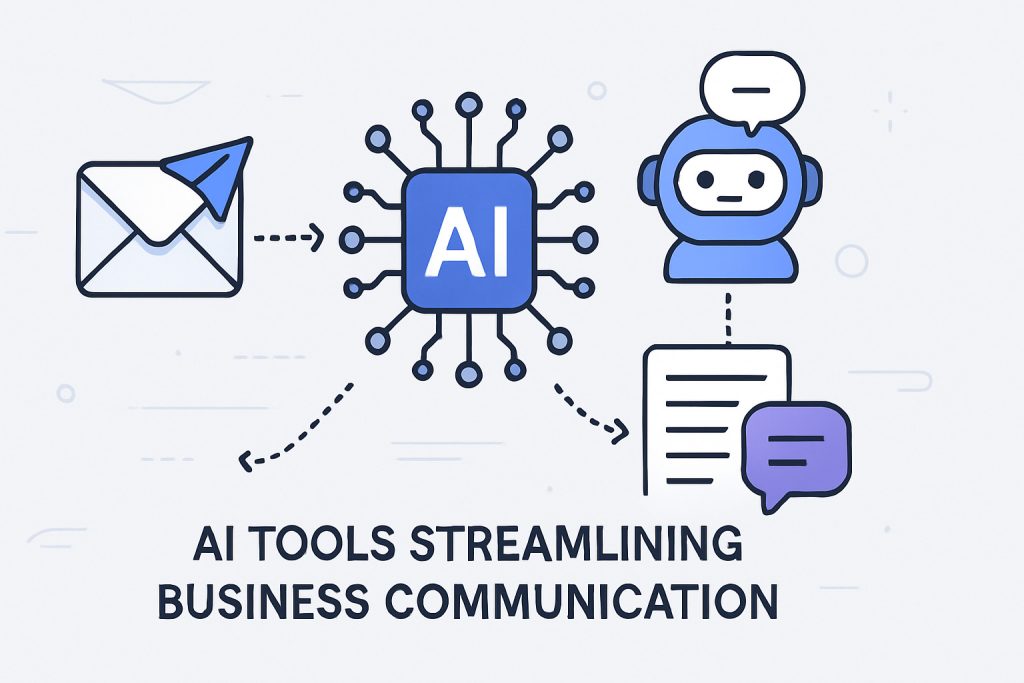Feeling overwhelmed? Drowning in emails, struggling to keep projects on track, constantly battling the clock? If you’re an entrepreneur, coach, or small business owner, you know the feeling. The relentless pressure to juggle sales, marketing, operations, client communication, and countless administrative tasks often leaves you feeling stretched thin, reactive rather than proactive. You’re expected to wear multiple hats, often without the support of a large team, leading to long hours and the pervasive sense that you’re always behind. It’s exhausting, inefficient, and frankly, unsustainable for long-term growth and well-being
Imagine the sheer volume of routine tasks that consume your valuable time: sorting through hundreds of emails, scheduling and rescheduling meetings, manually updating project statuses, drafting routine communications, managing social media engagement, organizing files… the list goes on. Studies consistently show that professionals spend a significant portion of their workday on such low-value, administrative activities – time that could be invested in strategic planning, client relationship building, innovation, or simply recharging
But what if you could delegate a substantial portion of this operational drag? What if you could leverage technology not just to store information, but to actively assist you in managing workflows, communicating effectively, and making smarter decisions? What if you could essentially clone the functions that drain your time and energy, freeing you to focus on the high-impact activities that truly drive your business forward?
That’s precisely where AI business assistants step in. These aren’t merely sophisticated apps or automation scripts; they are intelligent systems powered by artificial intelligence, designed specifically to understand, manage, and automate the repetitive, time-consuming components of your daily operations. Forget the futuristic hype often associated with AI; these assistants are practical, increasingly affordable, and readily available to become your most diligent and efficient team members – ones that operate 24/7, learn your preferences, and handle tasks with speed and accuracy, all without needing coffee breaks or vacation time
In this comprehensive guide, we’ll delve deep into the transformative potential of AI business assistants for entrepreneurs and small teams. We’ll move beyond the buzzwords to provide a clear understanding of how these tools can revolutionize your workday. You’ll discover:
- The often-underestimated hidden costs and opportunity losses associated with manually handling administrative overload
- The core functional areas where AI assistants can provide immediate relief and significant efficiency gains
- Conceptual examples of powerful AI capabilities that automate communication, accelerate content creation, optimize scheduling, and streamline project management
- A practical, step-by-step framework for strategically building your own AI-powered workflow, starting small and scaling effectively
- Key considerations for selecting and implementing these tools successfully
Are you ready to transition from working in your business to working on your business? Are you prepared to leverage intelligent automation to work smarter, not just harder, and reclaim your most valuable asset – your time? Let’s explore the tangible ways AI can transform your business operations, starting today
The crushing weight of doing it all yourself: beyond the obvious
Running your own business offers unparalleled freedom and satisfaction, but the “solopreneur grind” or the pressure on small teams often means drowning in tasks that, while necessary, don’t directly contribute to revenue generation or strategic advancement. Manually managing emails, scheduling endless back-and-forth for meetings, meticulously updating project boards, crafting every piece of content from scratch… it all accumulates into a significant operational burden
This isn’t merely about feeling busy; the consequences are tangible and detrimental:
- Lost Opportunities & Revenue Leakage: Every minute spent sorting emails is a minute not spent nurturing a lead. Slow responses to inquiries can mean potential clients look elsewhere. Inconsistent follow-up translates directly into missed sales conversions. The cumulative effect of these small delays and inefficiencies can represent a significant revenue leak over time
- Stalled Growth & Strategic Paralysis: When your day is consumed by administrative fires, there’s simply no bandwidth left for the high-level thinking required for growth. Strategic planning, market analysis, exploring new service offerings, refining your business model – these critical activities get perpetually pushed to the back burner, leading to stagnation
- Burnout & Decreased Well-being: The constant pressure to be everywhere and do everything is a direct path to mental and physical exhaustion. Burnout isn’t just feeling tired; it’s a state of chronic stress that impairs decision-making, creativity, and overall health. This ultimately impacts your ability to lead and sustain your business effectively
- Erosion of Professional Image & Client Trust: Consistency and responsiveness are hallmarks of professionalism. Dropped balls, missed deadlines, slow communication, or appearing disorganized can damage your reputation and erode client trust, making it harder to retain existing clients and attract new ones
- Inability to Scale Effectively: As your business grows, the volume of administrative tasks increases exponentially. Without efficient systems, you hit a scaling ceiling where you simply cannot handle more clients or projects without quality suffering or requiring premature, costly hires
You might rationalize that you’re saving money by handling everything yourself or with a minimal team. However, the true cost lies in the opportunity cost – the value of what you could be doing if your time wasn’t consumed by low-value, automatable tasks. You didn’t start your business to become an expert inbox manager or a master scheduler; you started it to pursue a vision, serve clients, and build something meaningful
AI business assistants offer a powerful lever to break free from this cycle. By systematically automating and optimizing these essential but time-consuming functions, they allow you to operate with the efficiency and responsiveness typically associated with much larger organizations, even if your core team remains lean. It’s about reclaiming your time and energy to focus on the activities only you can do – the strategic, creative, and relationship-driven work that fuels sustainable growth
Where AI assistants shine: key areas for automation transformation
So, where can these digital helpers make the most immediate and significant impact? While AI capabilities are constantly expanding, several core operational areas are ripe for transformation through readily available assistant tools. These are the domains where repetitive tasks, information overload, and coordination challenges frequently create bottlenecks for entrepreneurs and small teams:
1. Taming the communication beast: email, chat, and meetings
Communication is the lifeblood of any business, but managing the sheer volume and variety of channels can be overwhelming. Your inbox becomes a battleground, meeting schedules resemble complex puzzles, and customer inquiries demand instant responses. AI tools are stepping in to manage this flow, enhance responsiveness, and reclaim precious focus time
- Intelligent Email Management: Imagine an inbox that proactively filters itself. AI tools analyze your communication patterns to distinguish high-priority messages from newsletters, notifications, and spam. They can automatically sort non-urgent items into designated folders like SaneBox’s, summarize lengthy email threads to give you the gist quickly, identify emails needing follow-up, and even draft context-aware replies for common inquiries. This transforms email from a constant interruption into a manageable communication channel.
- Automated Scheduling & Calendar Intelligence: The tedious back-and-forth of finding mutually agreeable meeting times is eliminated. AI scheduling assistants connect to your calendar, understand your availability preferences (including buffer times and focus blocks), and present clients or collaborators with a simple interface to book appointments instantly. They handle time zone conversions, send automated reminders to reduce no-shows, and can even integrate with payment processors or intake forms. Beyond client booking, tools like Reclaim. AI or Clockwise intelligently schedule your own tasks and habits around your meetings, ensuring that focus work gets the dedicated time it needs
- Smarter Meeting Facilitation & Documentation: Meetings are essential but often inefficient. AI assistants can join your virtual calls (like Fireflies.ai), provide real-time transcription, and automatically generate summaries highlighting key decisions and action items afterward. This eliminates the need for manual note-taking, ensures accountability, and creates a searchable archive of meeting content. Some tools are even beginning to analyze sentiment or participation patterns
- Instant Customer Engagement & Support: Your website and social media channels are key touchpoints. AI-powered chatbots (like Tidio or Intercom) can provide 24/7 instant responses to frequently asked questions, guide visitors through your offerings, qualify leads by asking relevant questions, and seamlessly hand off complex inquiries to human agents when needed. This improves customer satisfaction and ensures no lead falls through the cracks, even outside business hours
2. Accelerating content creation & knowledge management
Creating consistent, high-quality content and effectively managing internal knowledge are critical for marketing, sales enablement, and operational efficiency. However, these processes are often time-intensive and prone to bottlenecks like writer’s block or information silos.
- AI Writing Assistance & Ideation: Staring at a blank page? AI writing assistants (like Jasper or Copy.ai) act as powerful brainstorming partners and drafting tools. Provide a topic, keywords, and desired tone, and they can generate outlines, suggest headlines, draft introductory paragraphs, create social media posts, write email copy, or even produce initial long-form article drafts. They leverage vast datasets and sophisticated language models to overcome writer’s block and significantly speed up the initial creation phase. Remember, the key is to use AI as a co-writer, refining and adding your unique expertise to the generated output.
- Automated Presentation & Visual Content Generation: Transforming ideas or text into visually compelling presentations can take hours. AI tools (like Gamma or Tome) automate this process. Simply provide an outline or paste text, and the AI generates well-designed, interactive slides or webpages, complete with suggested layouts, imagery, and formatting. This is invaluable for creating sales decks, training materials, or reports quickly.
- Intelligent Knowledge Base Management: Project documentation, standard operating procedures, research notes – valuable information often gets lost in scattered documents and folders. AI-enhanced knowledge management platforms (like Notion AI) allow you to centralize information and then use AI to summarize documents, answer questions based on the content within your knowledge base, extract key insights, and even draft new content based on existing information. This makes knowledge accessible and actionable for the entire team.
3. Optimizing scheduling, task & time management
Effective time management is more than just keeping a calendar; it’s about proactively allocating your time to align with your priorities and ensuring tasks get completed efficiently. AI is moving beyond simple reminders to offer intelligent scheduling and task prioritization
- Smart Calendars & Time Blocking: Traditional calendars passively record appointments. AI-powered calendar tools (like Reclaim.AI or Clockwise) actively manage your schedule. They integrate with your task list and automatically find the best times to block out focus work, exercise, or other routines, dynamically adjusting as meetings shift. They defend your focus time, ensuring that important, non-urgent work doesn’t get constantly preempted by meetings
- Automated Client Booking Systems: As mentioned under communication, dedicated scheduling platforms (like Acuity Scheduling or Calendly) use AI principles to streamline the entire client booking process. They offer real-time availability, handle different appointment types, manage time zones, collect intake information, process payments, and send automated reminders, creating a seamless experience for clients and freeing up significant administrative time for you
4. Streamlining project management & workflow automation
Keeping complex projects on track requires meticulous organization, clear communication, and efficient workflows. AI is being integrated into project management platforms and automation tools to reduce manual effort and provide smarter oversight.
- AI-Powered Project Hubs: All-in-one project management platforms (like ClickUp, Asana, or Monday.com) are increasingly embedding AI features. These can include automatically summarizing progress updates from task comments, generating project status reports, identifying potential risks or bottlenecks based on task dependencies and timelines, suggesting task assignments, or helping draft project documentation. This reduces the manual burden of project administration and provides quicker insights.
- Intelligent Workflow Automation: Tools like Zapier or Make act as the connective tissue between your various software applications. While traditionally rule-based, they are incorporating AI steps (e.g., using an AI model to summarize an incoming email before creating a task in your project manager, or categorizing a new lead based on website form input before adding it to your CRM). This allows for the creation of sophisticated, automated workflows that span multiple tools, eliminating manual data entry, reducing errors, and ensuring seamless information flow across your entire tech stack
Building your AI-powered workflow: a strategic, step-by-step approach
Feeling intrigued but perhaps a little overwhelmed by the possibilities? The key is not to try and implement everything at once. A successful transition to an AI-assisted workflow is gradual and strategic. Here’s a practical framework:
- Identify Your Biggest Bottleneck & Pain Point: Where do you consistently lose the most time? What tasks cause the most friction or frustration? Is it managing the email deluge? The endless back-and-forth of scheduling? The struggle to create content consistently? Getting bogged down in project updates? Be specific and honest about your primary operational headache.
- Research & Select ONE Focused Tool: Based on your identified bottleneck, research AI assistant tools specifically designed to solve that problem. Look for reputable providers with good reviews, clear pricing, and strong integrations with your existing core tools (like your email client or calendar). Prioritize simplicity and effectiveness for your first implementation. Don’t choose an overly complex, all-encompassing platform initially
- Implement with a Clear Goal & Test Rigorously: Define exactly what you want the tool to achieve. For example, “Reduce time spent sorting non-urgent emails by 50%” or “Eliminate manual scheduling for client discovery calls.” Set up the tool carefully, following its onboarding guides. Use it consistently for a defined trial period (e.g., two weeks or one month). Crucially, measure the impact. Did it save you quantifiable time? Did it reduce errors? Did it improve client responsiveness? Did it alleviate the specific pain point you targeted?
- Evaluate & Refine: After the test period, assess the results. Did the tool deliver on its promise? Is the cost justified by the time saved or value gained? If yes, integrate it fully into your workflow. If not, don’t be afraid to discard it and try an alternative. Sometimes the first tool isn’t the perfect fit. Refine your usage based on what worked and what didn’t.
- Layer & Integrate Intelligently: Once your first AI assistant is successfully integrated and delivering value, revisit Step 1. What is the next biggest bottleneck? Select another focused tool to address it. Importantly, look for opportunities where tools can work together. Can your AI scheduler automatically create a task in your AI project manager? Can your AI meeting assistant save notes directly to your AI knowledge base? Use workflow automation tools like Zapier to connect your assistants and create a truly cohesive, automated system.
The objective isn’t simply to accumulate a collection of shiny new apps. It’s to build a synergistic ecosystem where AI handles the routine, predictable tasks, freeing up your cognitive resources for strategic thinking, creative problem-solving, and meaningful human interaction. Start small, prove the value, and build incrementally
The future is assisted: embracing your digital partners for growth
AI business assistants are far more than just a fleeting technological trend; they represent a fundamental paradigm shift in how work gets done, particularly for entrepreneurs and small, agile teams. They offer unprecedented leverage, democratizing capabilities previously accessible only to large corporations with extensive administrative staff. By thoughtfully integrating these intelligent tools, you can achieve significant, tangible benefits:
- Reclaim Significant Time: Conservatively, businesses can reclaim dozens of hours each month by automating tasks like email filtering, scheduling, note-taking, and basic content drafting.
- Enhance Professionalism & Responsiveness: Faster response times, seamless booking experiences, and consistent follow-up elevate your brand image and improve client satisfaction.
- Enable Scalable Operations: Handle increased volume and complexity without a linear increase in administrative headcount, allowing you to grow more efficiently.
- Reduce Cognitive Load & Burnout: Offloading mentally draining, repetitive tasks frees up mental energy and reduces the chronic stress associated with administrative overload.
- Sharpen Strategic Focus: By automating the tactical, you gain the time and mental space needed for strategic planning, innovation, and high-value client engagement.
- Improve Data Accuracy & Reduce Errors: Automation minimizes the risk of human error inherent in manual data entry and repetitive processes.
Integrating AI assistants isn’t about replacing the essential human element of your business – your expertise, your relationships, your unique vision. Instead, it’s about amplifying your human impact by delegating the tasks that machines can perform efficiently and accurately. It’s about letting technology handle the operational friction so you can focus on the activities that generate the most value and fulfillment.
The journey starts with awareness and a willingness to experiment. Explore the tools mentioned here and in our supporting articles. Start with one small step to address your most pressing pain point. Test, learn, and adapt. By embracing these intelligent digital partners, you can transform your daily workflow, accelerate your business growth, and build a more sustainable and rewarding entrepreneurial journey



